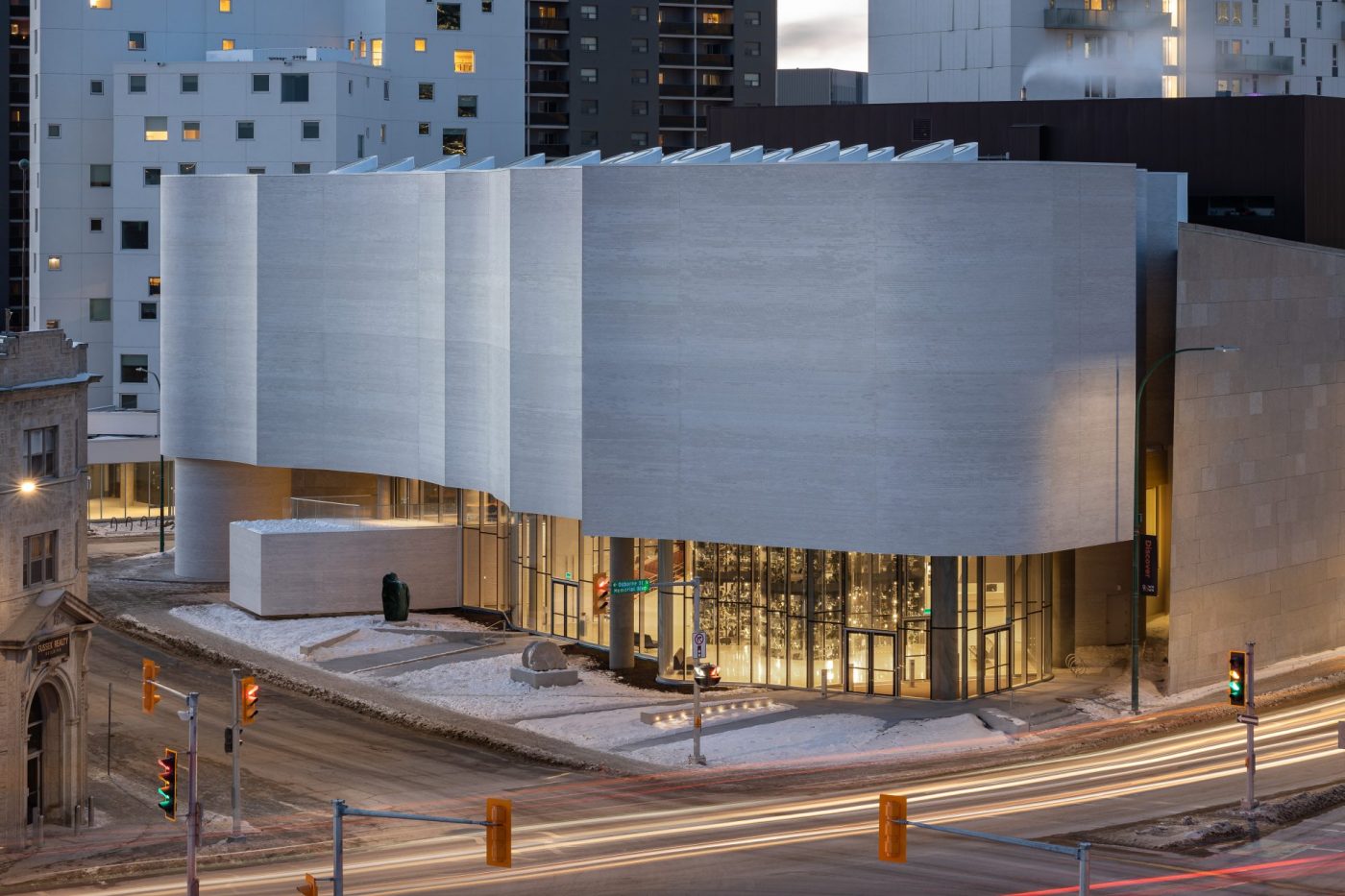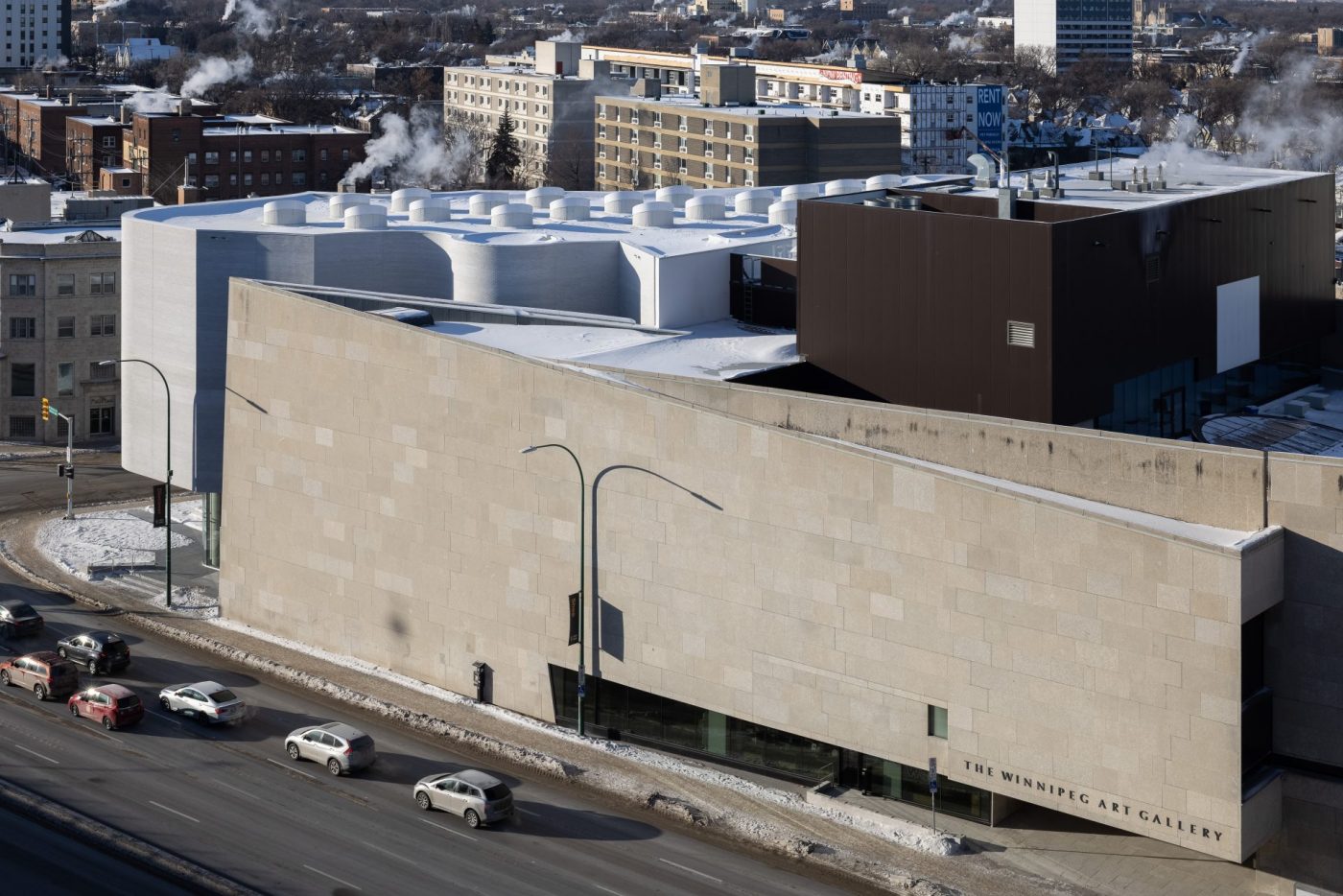Indigenous languages Inuktitut, Inuttitut, Inuvialuktun, Anishnaabemowin, Nêhiyawêwin, Anishininimowin, Dakota, Dene, and Michif (Metis) will now have a more powerful presence throughout the spaces and welcome visitors to the Gallery. Indigenous-focused and Indigenous-led initiatives will be at the heart of this new space, and giving the spaces Indigenous names is just the start.
We have included Inuit and Inuvialuit names from each dialect of Inuktitut, and names from all languages of Indigenous Peoples of Manitoba. Language keepers provided spellings based on their regional dialects, which may differ from other regional spellings and pronunciations within each language group.
Language Keepers
Byron Beardy • Holly Carpenter • Elder Dr. Mary Courchene • Elder Verna Demontigny • EJ Fontaine • JD Harper • Johnny Kasudluak • Taqralik Partridge • Diane Powderhorn • Maggie Putulik • Eric Robinson • Marge Roscelli • Dr. Niiganwewidam Sinclair • Theresie Tungilik • Krista Ulujuk Zawadski • Katie Winters
Indigenous Advisory Circle Member Contributors
asinnajaq • Dr. Sherry Farrell Racette • Fred Ford • Dr. Jarita Greyeyes • Dr. Heather Igloliorte • Jaimie Isaac • Kablusiak • Julia Lafreniere • Tanya Lukin-Linklater • Dr. Cathy Mattes • Jocelyn Piirainen • Daina Warren
Special thanks to Maxine Anguk for voicing the Inuktitut pronunciations!
Learn more about these names here:
Qaumajuq
[kow-ma-yourk] or sometimes heard [how-ma-yourk]
Space: Inuit art centre
Language Keeper: Theresie Tungilik
Language: Inuktitut (Nunavut)
Meaning: “It is bright, it is lit”
Qaumajuq (formerly the Inuit art centre) is a landmark building in Winnipeg’s downtown and a home dedicated to Indigenous art, culture, and traditions. Our hope is that Qaumajuq will be a cultural hub for the Indigenous community in Winnipeg, allowing artists to gather, youth to learn, and Elders to share. Indigenous-focused and Indigenous-led initiatives will be at the heart of this new space.
Qaumajuq’s mandate has been developed in consultation with the WAG Indigenous Advisory Circle, and now the spaces that surround that mandate have been given by Indigenous Language Keepers.
Biindigin Biwaasaeyaah
[BEEN- deh-gen Bi-WAH-say-yah]
Space: Winnipeg Art Gallery
Language Keeper: Elder Dr. Mary Courchene
Language: Anishinaabemowin
Meaning: “Come on in, the dawn of light is here”, “the dawn of light is here” or “the dawn of light is coming”
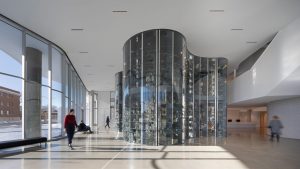
Visible Vault, Qaumajuq, the Inuit art Centre at the Winnipeg Art Gallery. Photo by Lindsay Reid.
Ilavut
[eelah-voot]
Space: Entrance Hall
Language Keeper: Katie Winters
Language: Inuttitut (Nunatsiavut)
Meaning: “Our relatives” resonated with people because everyone loved the idea that both the artworks in the vault and the artists who made them are “our relatives”

Qilak, Main Inuit Gallery, Qaumajuq, the Inuit art Centre at the Winnipeg Art Gallery. Photo by Lindsay Reid.
Qilak
[key-lack]
Space: Main Inuit Gallery
Language Learner: Taqralik Partridge
Language: Inuktitut (Nunavik)
Meaning: “Sky” – note Giizhig / Kisik below also means “Sky”, these spaces are sharing concept in different languages.
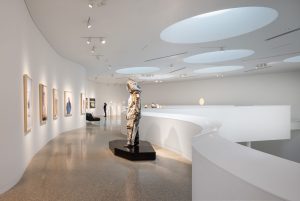
Qilak, Main Inuit Gallery, Qaumajuq, the Inuit art Centre at the Winnipeg Art Gallery. Photo by Lindsay Reid.
Giizhig / Kisik
[Gee-shig] or [Key-sick]
Space: Fourth Floor Gallery
Language Keeper: Eric Robinson
Language: Nêhiyawêwin
Meaning: “Sky, heaven, day” – note Qilak above also means “Sky”, these spaces are sharing concept in different languages.
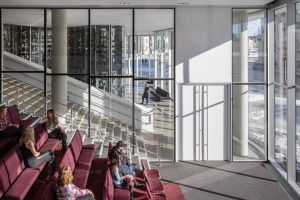
Ilipvik, Learning Steps, Qaumajuq, the Inuit art Centre at the Winnipeg Art Gallery. Photo by Lindsay Reid.
Ilipvik
[eelip-vick]
Space: Learning Steps
Language Keeper: Dr. Heather Igloliorte
Language: Inuttitut (Nunatsiavut)
Meaning: A place where you go to learn

Qaumajuq, the Inuit art Centre at the Winnipeg Art Gallery. Photo by Lindsay Reid.
Niizhwaaso Collaborative Learning Centre
[NeeZH-WAH-so]
Space: Collaborative Learning Centre
Language Keeper: Dr. Niiganwewidam Sinclair
Language: Anishinaabemowin
Meaning: Niizhwaaso (seven) in honour of the Indigenous group of seven

Nutaaq Tummaqtuyuq (Outdoor Plaza) – Qaumajuq, the Inuit art centre.
Nutaaq Tummaqtuyuq
[NEW-tack tuh-MUCK-tah-yuk]
Space: Outdoor Plaza
Language Keeper: Holly Carpenter
Language: Inuvialuktun (Inuvialuit Nunangit Sannaiqtuaq)
Meaning: Big steps forward
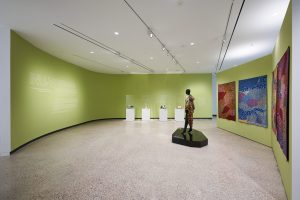
Maata (Martha) Kyak. Our Flourishing Culture. Photo by: David Lipnowski
Pimâtisiwin
[Bi-MAHDS-a-win]
Space: Focus Gallery
Language Learner: Julia Lafreniere
Language: Saulteaux
Meaning: Life and the act of living, to be alive
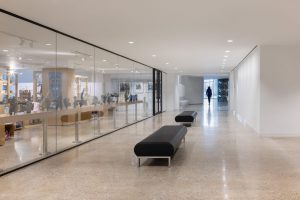
Ohni Izanzan
Ohni Izanzan
[OH-Nee ee-ZHAN-zhan]
Space: Main floor corridor between the WAG and centre
Language Keeper: Margaret Roscelli
Language: Dakota
Meaning: Denotes an everlasting light no matter what happens and how things may dim the light it is always there and will not go out, meaning the light of life, the light of our way of life/language, the world’s light
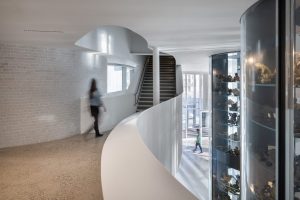
Qaumajuq, the Inuit art Centre at the Winnipeg Art Gallery. Photo by Lindsay Reid.
Kizepah Siiba Wasteh
[key-ZHAY-paw see-bah WASH-tay]
Space: Qaumajuq Mezzanine
Language Keeper: Byron Beardy with JP Harper
Language: Anishininimowin
Meaning: The morning light goes through
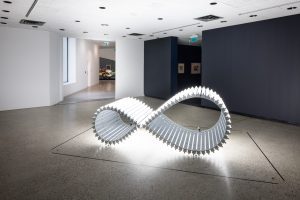
NAKISHKAMOHK
Nakishkamohk
[na-KISH-ka-mok]
Space: Bridge connecting the two buildings on each level
Language Keeper: Elder Verna Demontigny
Language: Michif
Meaning: “Connection”

Ilipvik, Learning Steps, Qaumajuq, the Inuit art Centre at the Winnipeg Art Gallery. Photo by Lindsay Reid.
Pituaq
[pit-two-aak]
Space: Ground floor classroom / research space
Language Keeper: Krista Ulujuk Zawadski
Language: Inuktitut (Nunavut)
Meaning: The foundation of the qulliq, the heart of the home, the stand on which the qulliq is lit; also the name of a constellation (Cassiopeia)

SAH HA’I’AH SI
Sah ha’i’ah si
[sah-HI-ah see]
Space: Stairway
Language Keeper: Diane Powderhorn
Language: Dene (Sayisi)
Meaning: “The sun has risen”
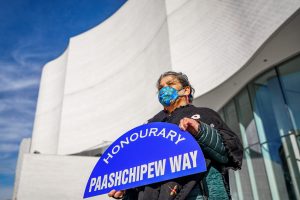
La Rue Paashchipew
La Rue Paashchipew
[Paa-shchi-pay-o]
Space: Colony Street
Language: Michif
Meaning: “Natural flowing waters, like a creek or stream that overflows into other branches of natural flowing waters. This name symbolizes cultural continuity, knowledge transmission and relationship building, and our ancestors presence overflowing and moving beneath the surface for us. As it is a buried creek that was named Colony that the street is named after.”
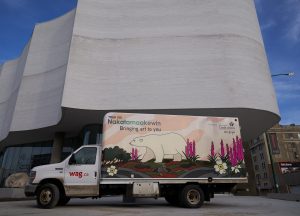
Nakatamaakewin
Nakatamaakewin
[na-kah-tah-MAA-kaywin]
Space: a unique mobile exhibition that will travel across the province to communities and schools for years to come
Language: Michif
Meaning: “to leave something behind”
Symbolic: The artworks in the van will be bringing their teachings and will leave behind knowledge in the different communities it travels to.
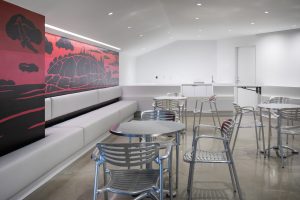
Katita
Katita
[kah-tee-tah]
Space: Cafe
Language Learner: Jocelyn Piirainen
Language: Inuktitut (Nunavut)
Meaning: “let’s get together”
The language keepers represent all four regions of Inuit Nunangat, including the Inuvialuit Settlement Region, Nunavut, Nunavik, and Nunatsiavut. Because the building is on Treaty 1 territory, it was also important to have Anishinaabemowin and Cree speakers, as well as Michif and Dakota speakers present. Winnipeg is located on the unceded territory of the Dakota people and on the homeland of the Metis Nation. The WAG thanks the group for generously sharing their knowledge and time.
This important step in decolonizing WAG-Qaumajuq directly references the United Nations Declaration on the Rights of Indigenous Peoples, Article 13:
Indigenous Peoples have the right to revitalize, use, develop and transmit to future generations their histories, languages, oral traditions, philosophies, writing systems and literatures, and to designate and retain their own names for communities, places and persons.
Language is also mentioned in the Truth and Reconciliation Commission Calls to Action, Number 14i:
Aboriginal languages are a fundamental and valued element of Canadian culture and society, and there is an urgency to preserve them.
To plan your visit, check out wag.ca/visit.
